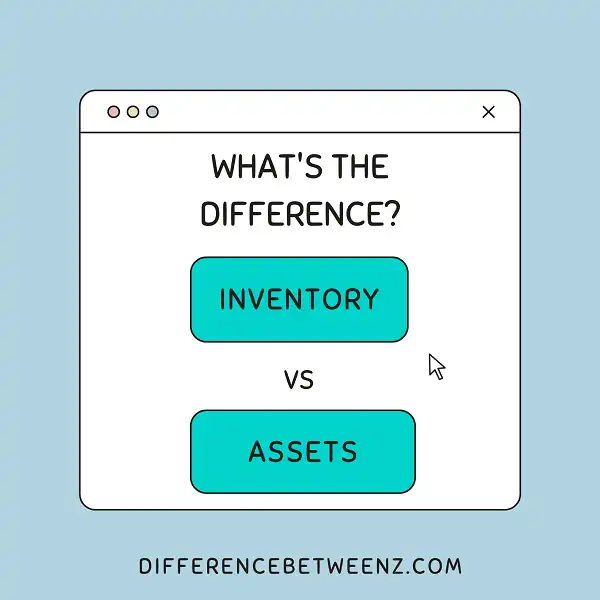Do you know the difference between inventory and assets? Most people use these words interchangeably, but they actually have very different meanings. Inventory is made up of items that a company plans to sell in the future, while assets are everything else a company owns. In this blog post, we will explore the differences between inventory and assets in more detail. We will also discuss how to calculate each one and what it means for your business. Stay tuned!
What is Inventory?
Inventory refers to the goods and materials that a business holds for the purpose of selling. It is important for businesses to maintain adequate inventory levels, as this can help to ensure that customer demand can be met and that production costs are kept low.
Inventory can be classified into two main categories: raw materials and finished goods. Raw materials are the component parts that are used in the manufacturing process, while finished goods are products that have been completed and are ready for sale.
Inventory management is the process of ensuring that inventory levels are appropriate, and it involves elements such as forecasting, stock control, and order fulfillment. Inventory management is a critical part of maintaining a successful business, as it helps to ensure that customer demand can be met while also minimizing wastage and production costs.
What are Assets?
Assets are anything that a business owns or uses to generate revenue. This can include cash, inventory, property, equipment, and even intangible assets such as patents or copyrights. In general, assets are classified as either current assets or long-term assets. Current assets are those that will be used up or converted into cash within one year. Long-term assets have a life span of more than one year. Assets are important because they provide the resources that a business needs to generate revenue and profit. Without assets, a business would have nothing to sell or use to produce goods and services. Careful management of assets is essential for any business that wants to be successful.
Difference between Inventory and Assets
Inventory and assets are both important for businesses, but they are not the same thing.
- Inventory refers to the raw materials, finished products, and work in progress that a company has on hand. In contrast, assets are items that have long-term value and can be used to generate income. Inventory is important because it represents the potential for future sales.
- However, inventory can also tie up a lot of cash, which is why efficient inventory management is critical for businesses. Assets, on the other hand, are important because they represent the company’s ability to generate income.
- For example, a factory or a fleet of vehicles can be used to produce goods or provide services.
As a result, businesses must carefully manage both their inventory and their assets in order to be successful.
Conclusion
The fundamental difference between inventory and assets is that inventory represents a current liability on a company’s balance sheet, while assets represent a long-term investment in the company. For this reason, it is important for businesses to keep track of their inventory levels and make sure they are not overstocked or holding too much obsolete inventory. By contrast, assets can be used to generate revenue for the business over an extended period of time, so it is crucial for companies to carefully select which assets to invest in.


